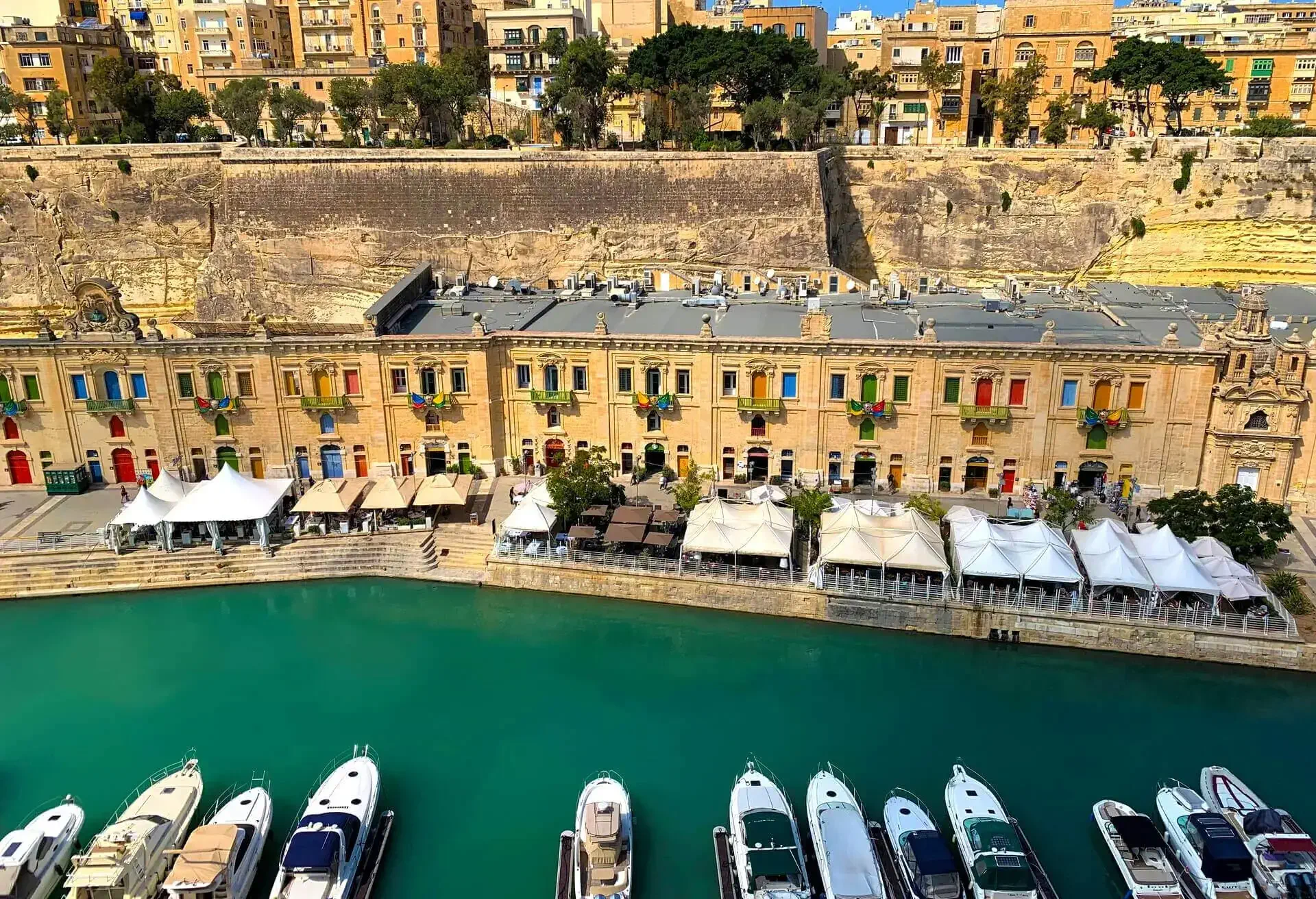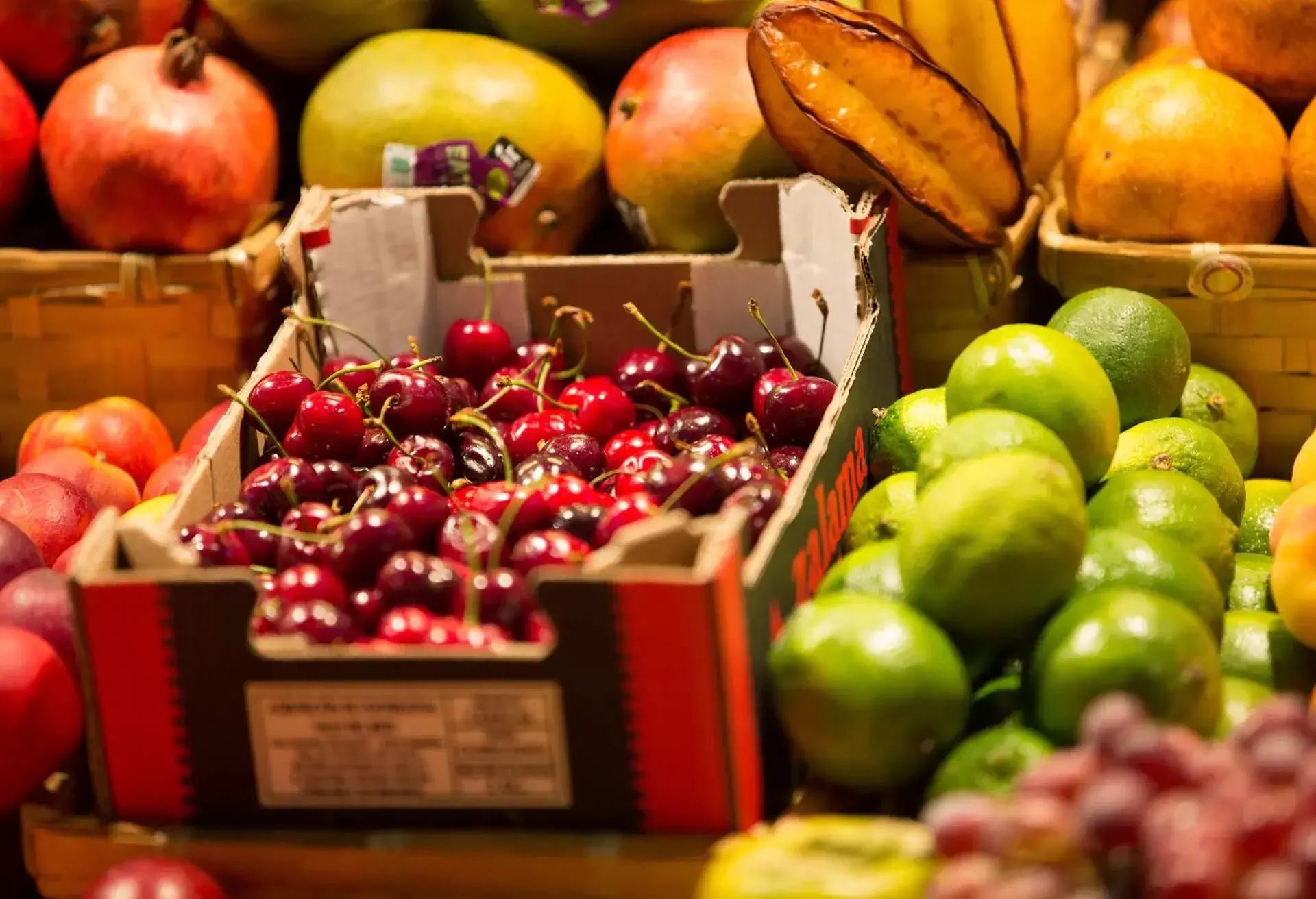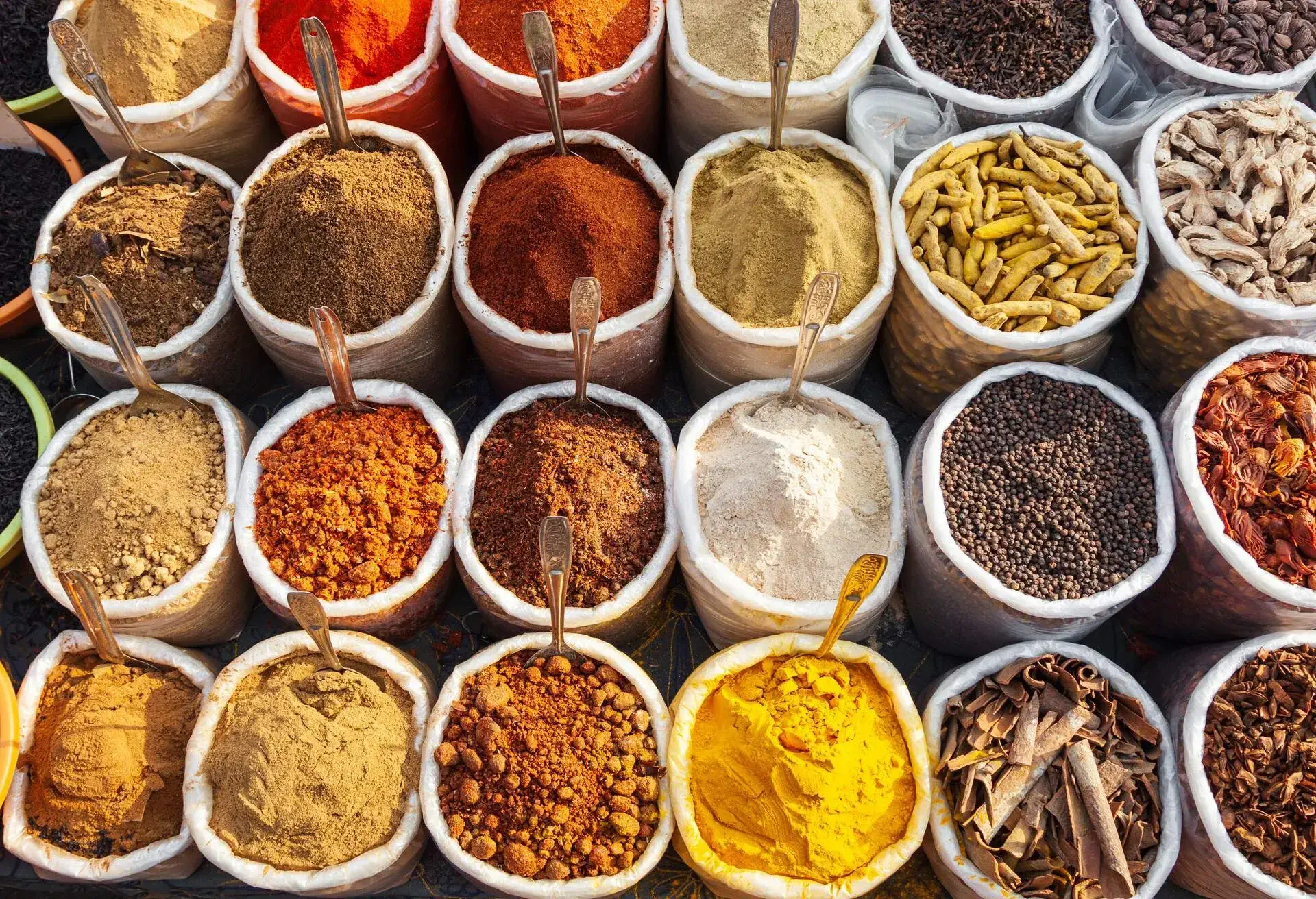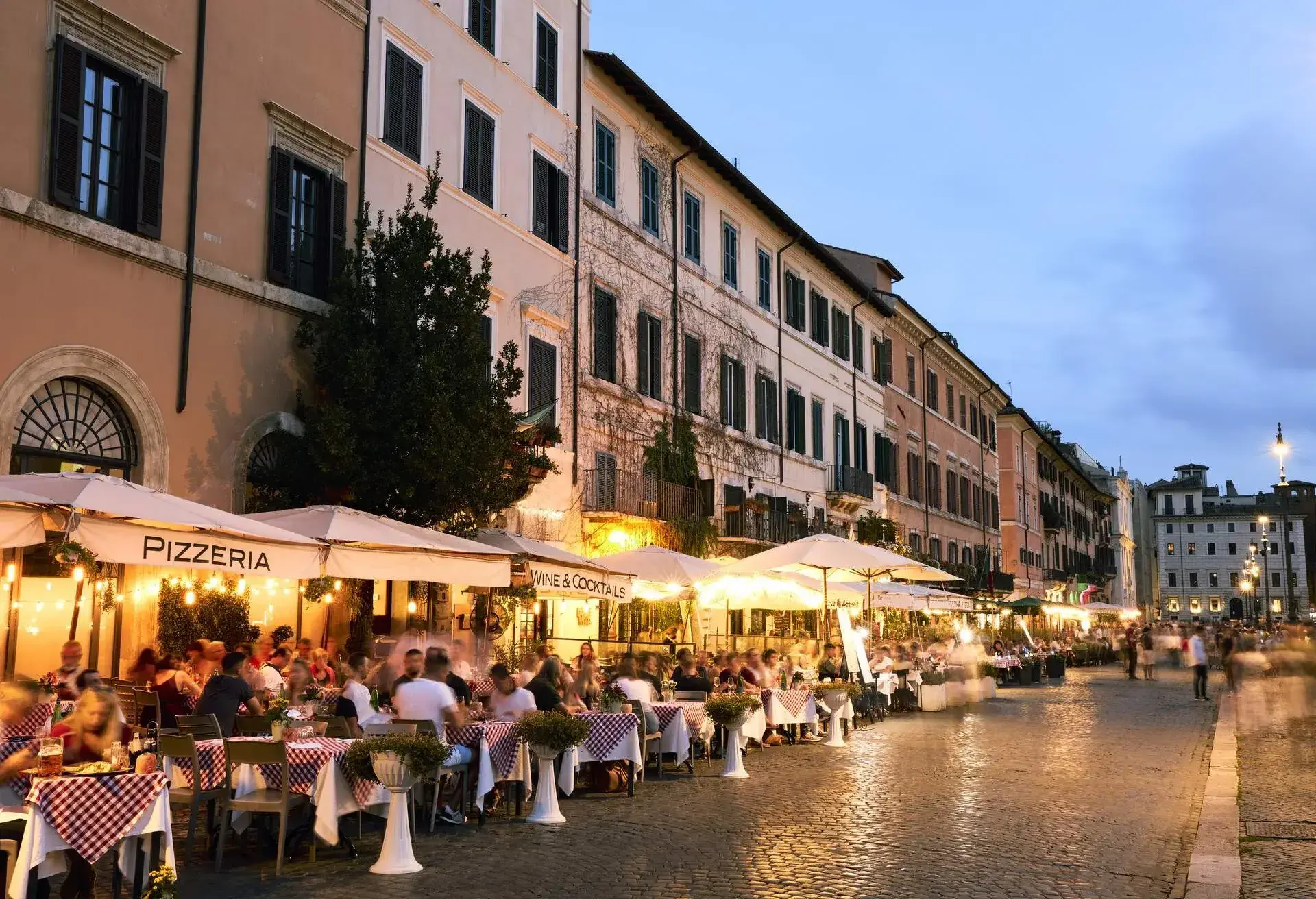With its wide-ranging menu of traditional and international cuisine, Maltese food is putting Malta on the map as a foodie destination in the heart of the Mediterranean.
Though small in scale, the island nation of Malta is big on history, culture – and cuisine. Numerous cultures have left their stamp on the country’s culinary identity, resulting in dishes and flavours in combinations you’d be hard-pressed to find elsewhere. Little wonder the locals love to eat: there are some 2000 restaurants serving a population of just 533,000.
From stuffed pastries and fresh-caught seafood to rich desserts and home-grown wines, Maltese cuisine promises to be one of the many highlights of a trip to this Mediterranean marvel.
Maltese food: a melting pot of cultures and cuisines

A small archipelago south of Sicily, Malta has had a long and rich history. Positioned along major trade routes and long considered a handy strategic outpost, the islands have felt the influence of the Sicilians, Romans, Byzantines, Arabs, Normans, the French and the British – along with the Knights of St John.
It’s probably no surprise, then, that Maltese food is a delicious melting pot of dishes and tastes. Here, rustic rabbit stews, Middle Eastern-style flatbreads, Mediterranean-inspired grilled fish and even thick cut potato chips are all on the menu.
Malta takes pride in its culinary traditions and trades. In addition to an endless variety of freshly caught seafood on offer at the market, you’ll also find honey, olive oil and even salt, all produced locally using age-old methods.
While Malta may not immediately come to mind as a major destination for wine lovers, it’s been busy producing reds, whites and even rosés for years. Alongside the usual Cab Sauvignon, Moscatos and Merlots, you’ll also find indigenous varieties like Gellewza and Ghirghentina on offer. However, production is so boutique that Maltese wine isn’t exported – so consider packing a bottle to take home.
Traditional Maltese food: tastes to tempt your palate
Malta is home to dozens of unique dishes. These are just a few worth seeking out.
Fenkata
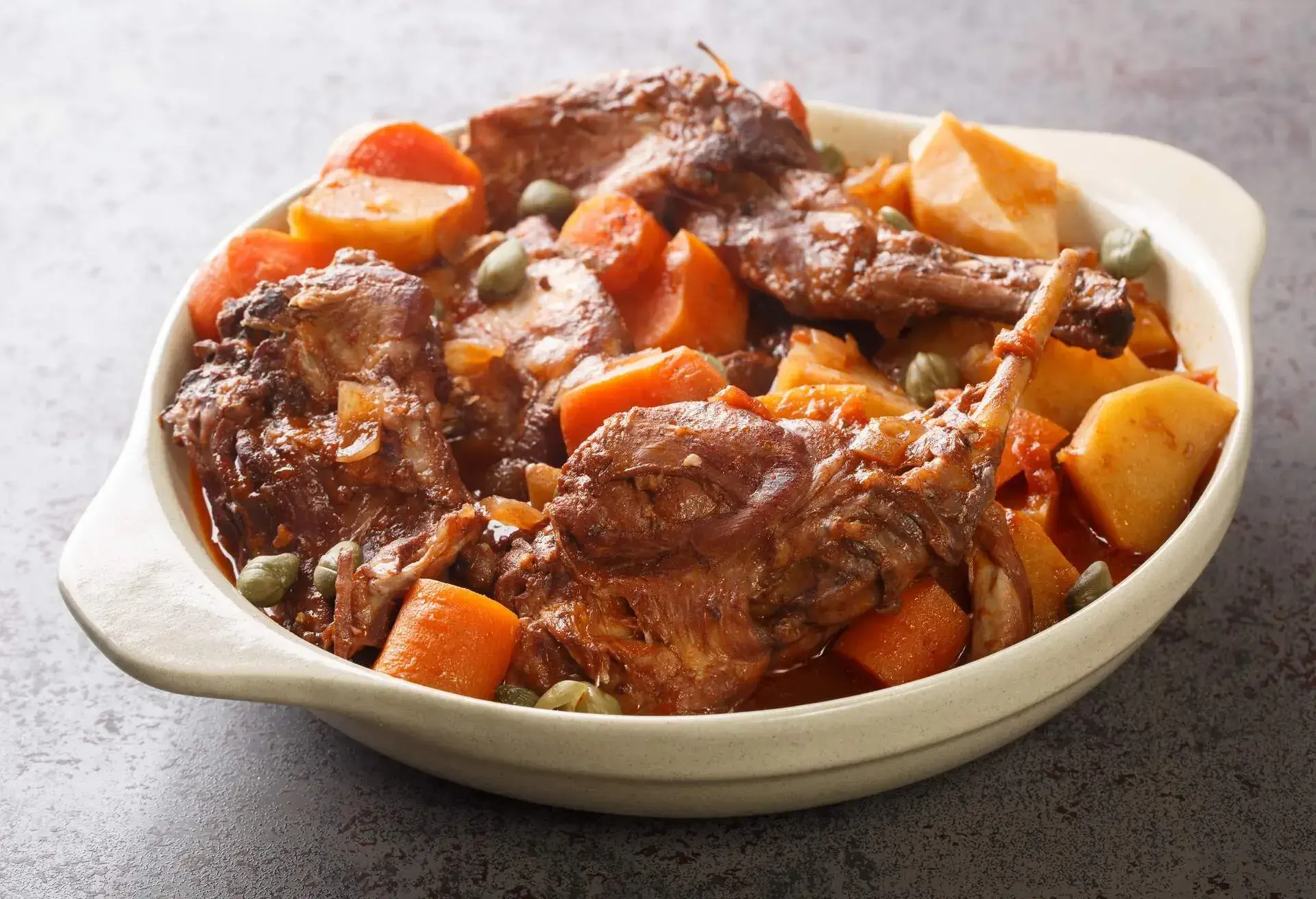
Widely considered Malta’s national dish, Fenkata means “rabbit”, and is a dish that can be served in a variety of ways. Most common are fried (fenkat moqli) or stewed (stuffat tal-fenek), although you’ll find baked and stuffed varieties too. Nougat, peanuts, chips and fresh bread are often served on the side. Fenkata is typically enjoyed when family or friends come together to celebrate or during Maltese festivities.
Stuffat Tal-Qarnit
A slow-cooked stew starring freshly caught octopus as the main ingredient, stuffat tal-qarnit combines both Sicilian and Arabic culinary influences with delicious results. Tal Familja in the Marascala countryside offers a traditional take, while The Medina Restaurant in Mdina serves a popular contemporary interpretation of the dish.
Pastizzi
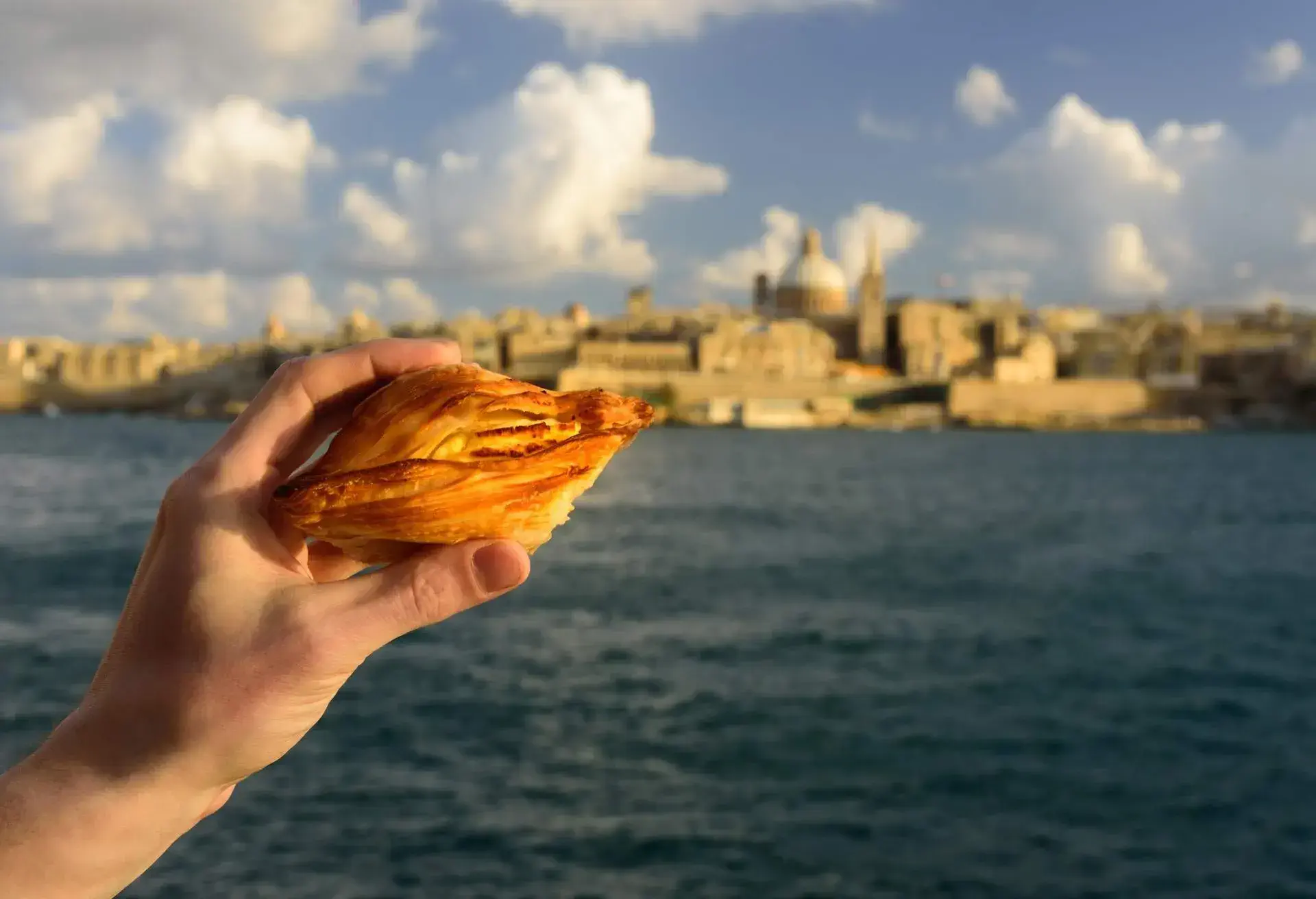
These crispy-skinned pocket pastries are easily Malta’s most beloved street food. They’re made from a flaky pastry similar to Greek phyllo and stuffed with delicious fillings including ricotta, peas and anchovies. Pastizzi can be found in small, hole-in-the-wall pastizzeria throughout the island, as well as at bars and shops. Often it’s a matter of following the tempting aroma – or the crowds. While pastizzerias abound, the Crystal Palace near the Roman Villa in Rabat is a local favourite.
Torta tal-lampuki
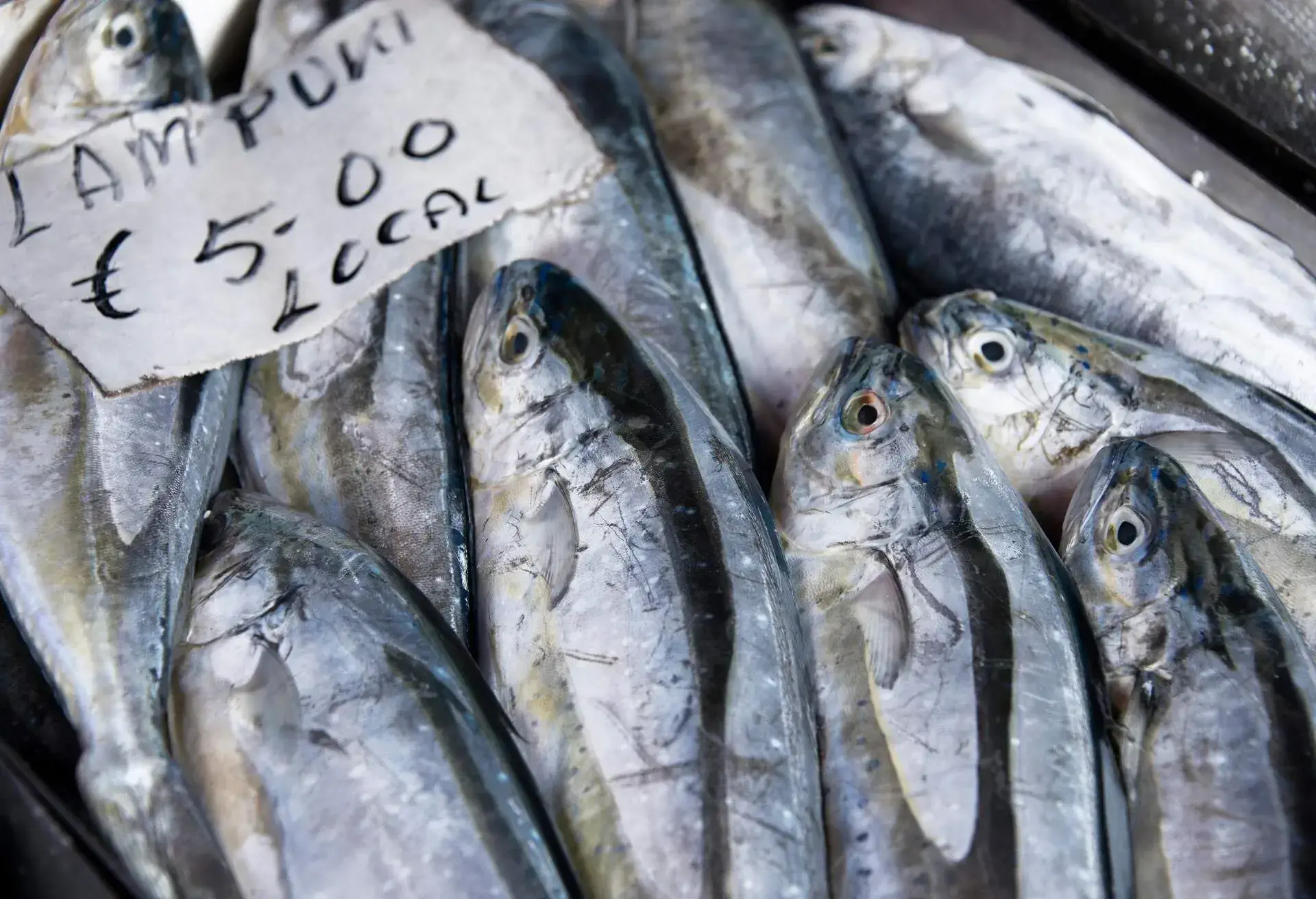
As the name suggests, the key ingredient of a torta tal-lampuki (lampuki pie) is a lampuka fish, more commonly known as the mahi-mahi. In addition to the lampuka, these savoury pies also feature spiced vegetables with a touch of Arabic and Italian flair. Mint, lemon, raisins, tomatoes, olives and capers are among the tastes you’ll pick up. Lampuki pies are largely an autumnal delicacy, coming into season as the lampuka does.
Bragioli
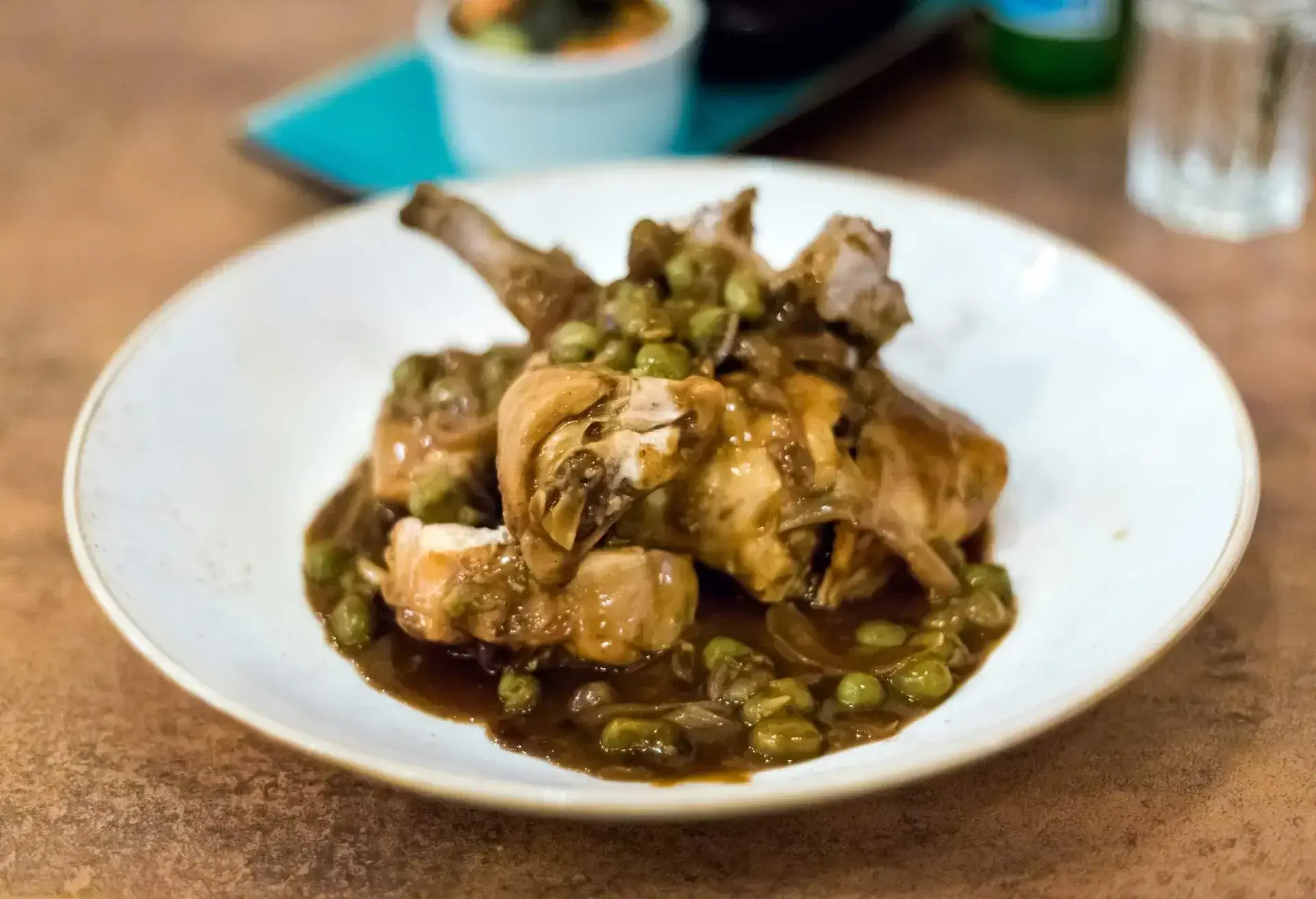
This hearty, rustic dish features spiced minced beef stuffing rolled in thinly sliced beef and simmered in a tomato-based sauce. The overall effect is of a “meat olive”, which is what bragioli literally translates to. Ta’ Kris Restaurant in Sliema has a reputation for plating up top-notch bragioli.
Gbejniet
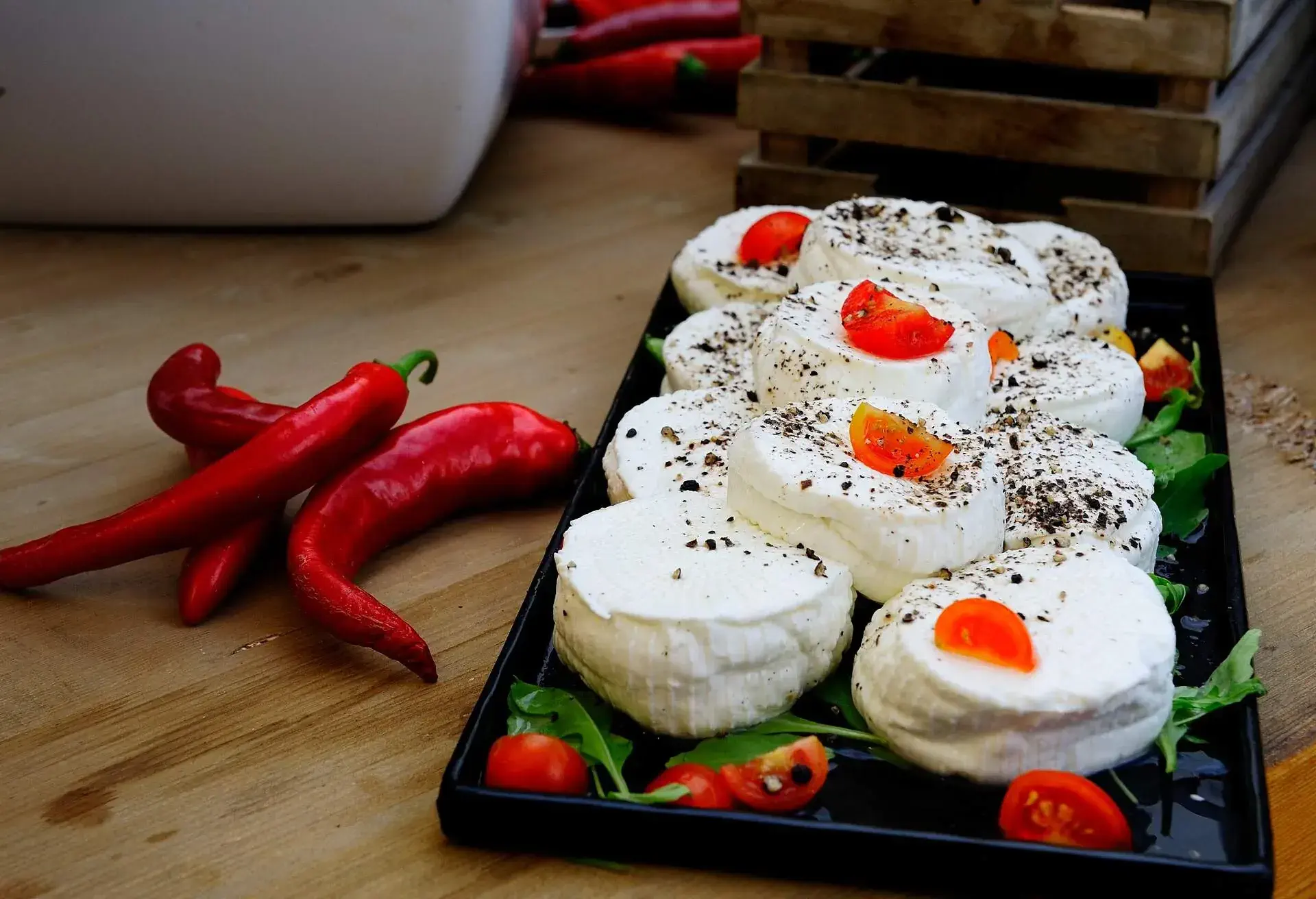
Roughly translating to “cheeselet”, ġbejniet are small cheeses made from goat’s milk and served up fresh, sun-dried or even cured. You’ll often find them drizzled in olive oil and balsamic vinegar and served up as a side dish, added to pasta or soups, or as a pizza topping.
Kusksu bil-ful
Hearty winter soups are a staple of Maltese cuisine during winter. As well as Minestra (Maltese Minestrone) and ‘Widow’s Soup’ (made using ingredients that traditionally, even a widow could afford), make sure you try Kusksu bil-ful, a broad bean and pasta soup that has a rich tomato base infused with herbs. This filling soup is often bulked up with eggs or cheese and served as a main dish.
Aljotta
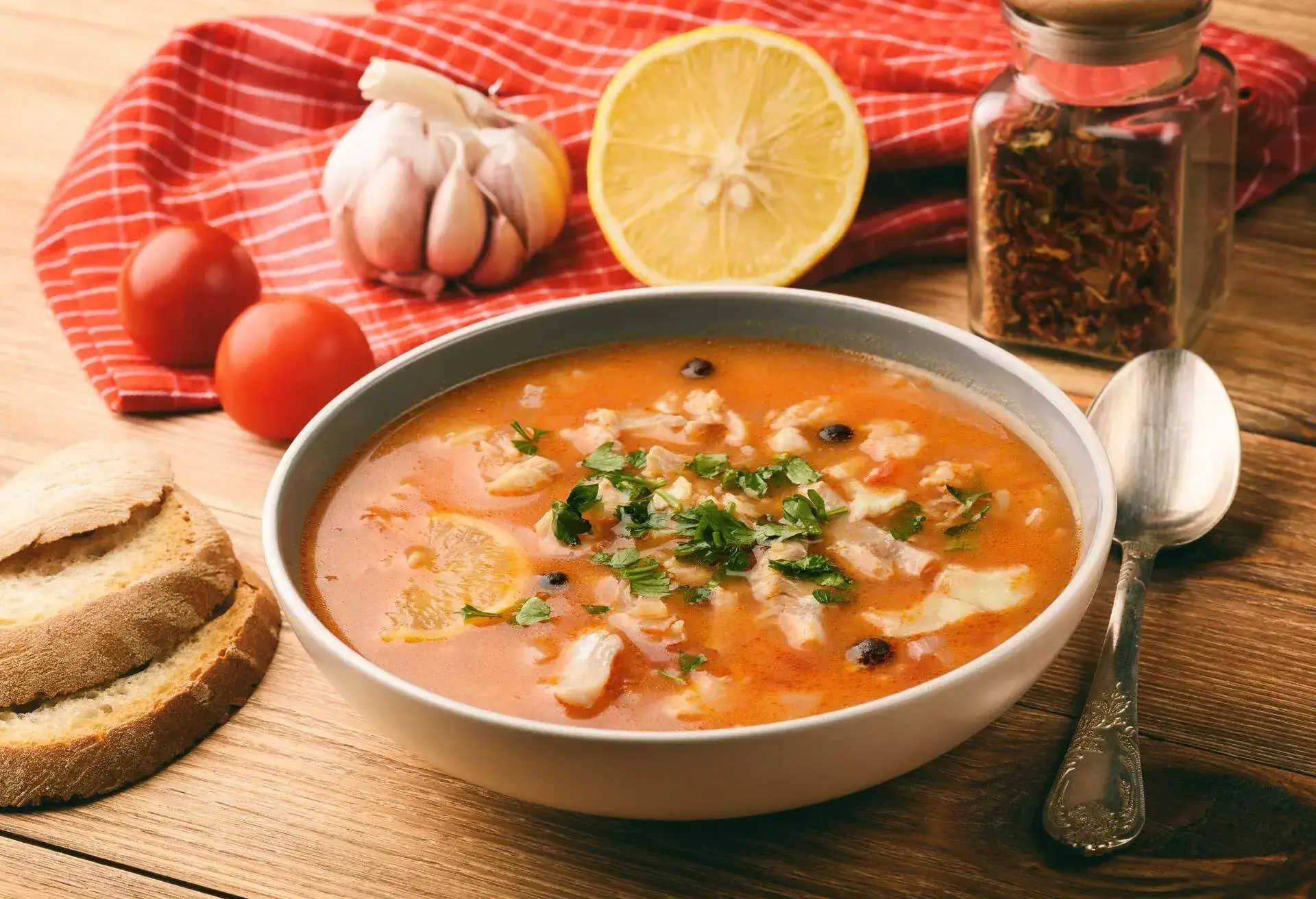
This traditional fish soup is particularly popular during the period or Lent, when Catholic locals avoid eating meat. It uses the whole fish for added flavour, including the head and tail! Aljotta takes its name from the plentiful amount of garlic included in the recipe, so maybe best avoided if you’re on a date…
Bigilla
A staple of everyday Maltese cuisine, this hearty dip made from local beans may not be the essence of fine dining by itself, but Bigilla combined with local breads and salads as part of a local mezze is hard to beat! It’s also an easy dish to make, so why not take a taste of Malta home with you!
Imqaret
Another nod to the varied influences on Maltese food, Imqaret is a sweet of Arabic origin. This diamond shaped treat – Imqaret means diamond – consists of flaky, deep fried pastry often infused with bay leaf or aniseed and filled with a date paste. Expect to find them at market stalls, or with ice cream as a dessert at a café or restaurant.
Food of Malta: where to try those local flavours
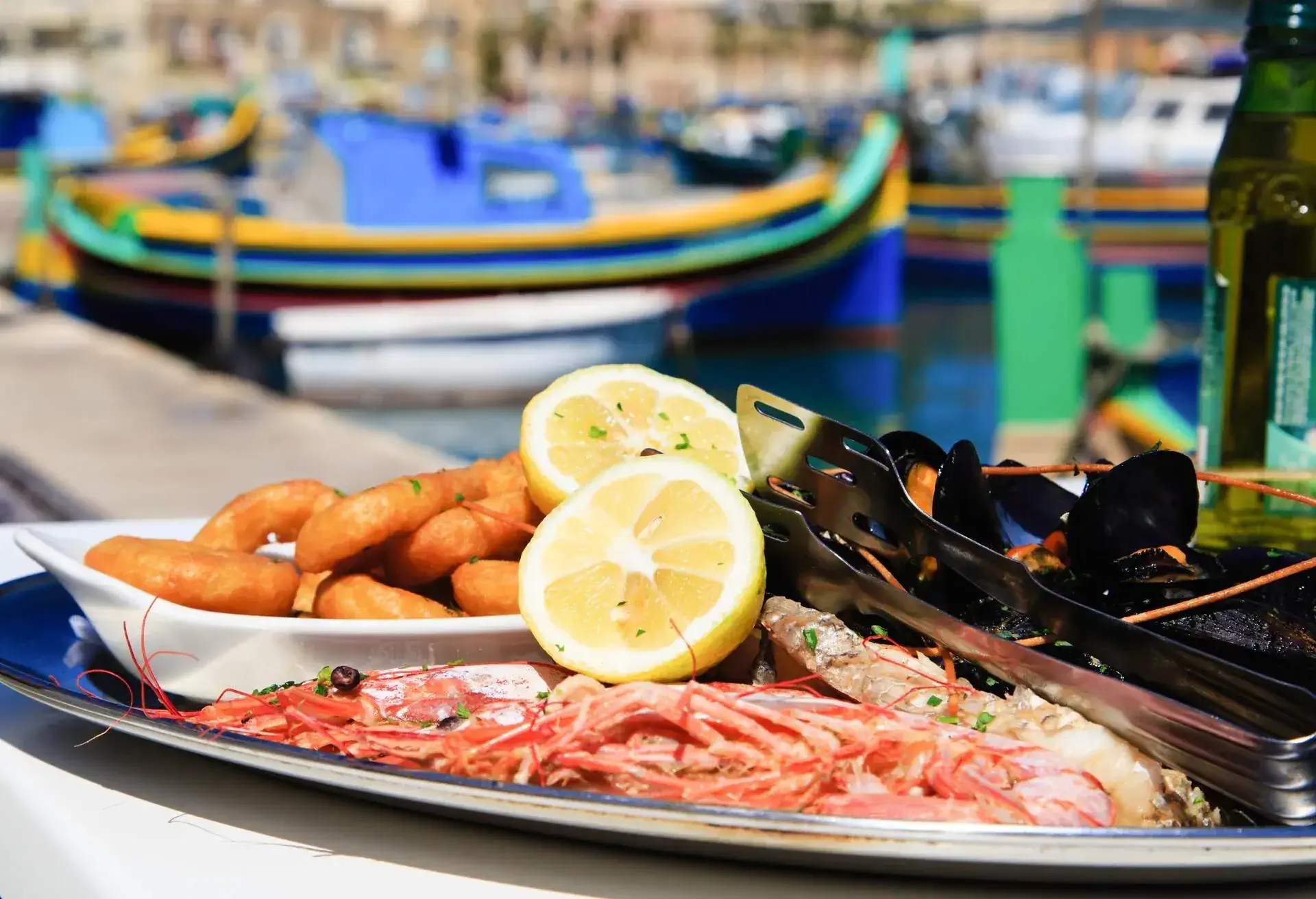
From casual pastizzi to fine dining in a magnificent estate, Malta has something to tempt everyone’s palate. Below are a few must-try destinations.
Crystal Palace, Rabat
This hole-in-the-wall venue is easy to pass by, but it would be a travesty to do so. A local favourite, this tiny restaurant serves up traditional pastizzi and qassatat (pea pies), along with tea served the old-fashioned way: in glass cups. It’s a bargain as well – expect to pay just a euro or two for your meal.
Address: Triq San Pawl, Ir-Rabat
Phone: +356 2145 3323
Il-Horza Restaurant, Valetta
Moments from the Valetta’s Lower Barrakka Gardens, Il-Horza is a cozy subterranean venue seating a total of eight patrons at any given time. The menu brims with an upscale take on traditional Maltese dishes and wines, and the underground, cellar-like setting makes for a uniquely intimate setting.
Address: 6 St. Christopher’s Street, Il-Belt Valletta
Phone: +356 2122 6936
Sottozero – the Gelato Factory, Bugibba
Right on the Bugibba waterfront on the way to the National Aquarium, Sottozero scoops up a delectable array of creamy gelato and sunny sorbets. Enjoy yours to-go as you stroll the quaint streets of this laid-back beachfront town.
Address: 44, Spring Street, Bugibba, St. Paul’s Bay
Phone: +356 2701 9339
Tartarun Restaurant, Marsaxlokk
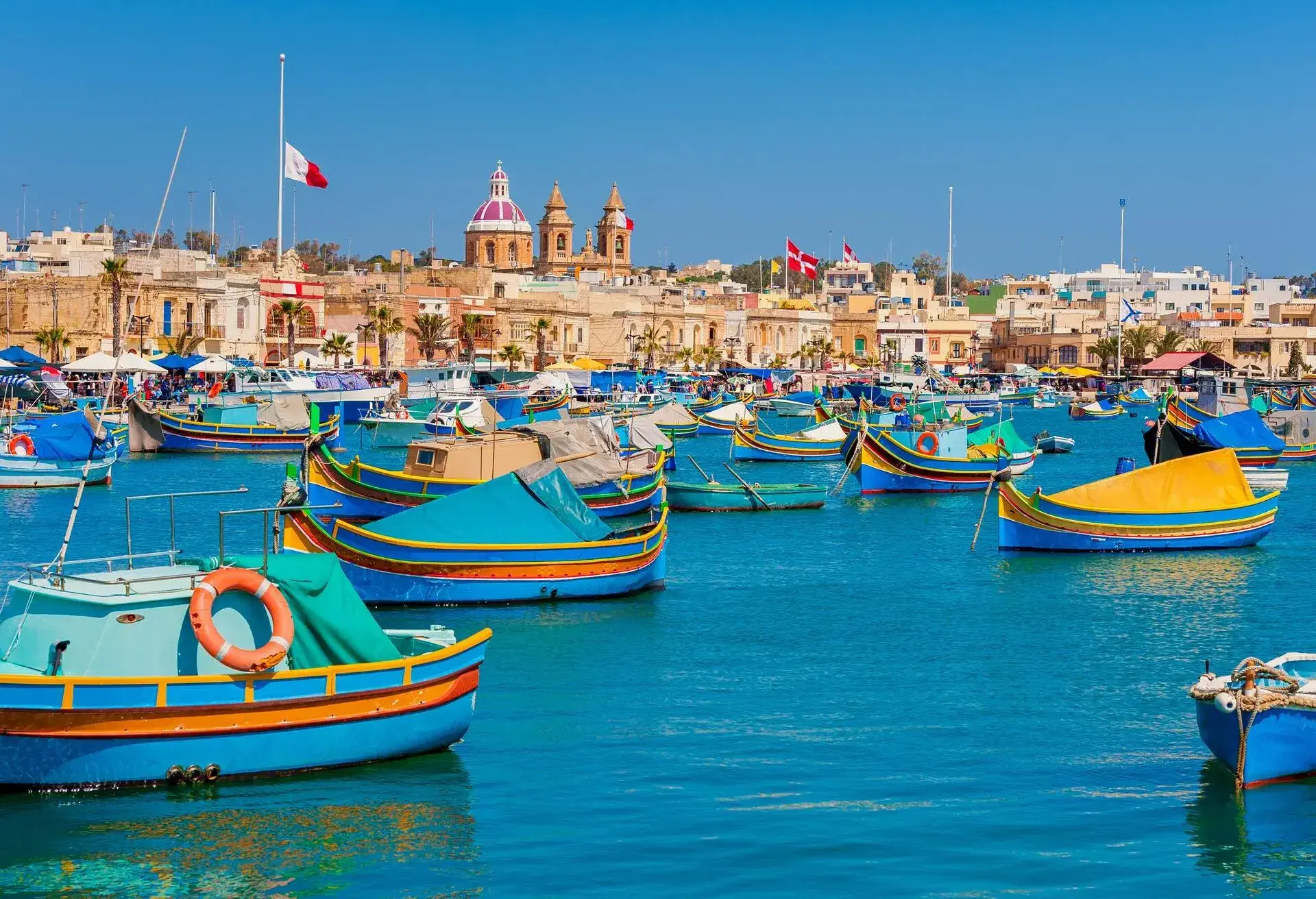
Located in the traditional fishing village of Marsaxlokk, famed for its fish market, Tartarun plates up fresh fish and seafood in a rustic environment. The menu ranges from local to international, but it’s hard to go wrong with the catch of the day.
Address: 20 Xatt is-Sajjieda, Marsaxlokk
Phone: +356 2165 8089
Ta’ Barbetta, Iż-Żejtun
This unassuming bakery has been serving the villagers of Iż-Żejtun since before World War II. Steps from the enormous Jesus of Nazareth Church, it’s a must-visit for freshly baked bread, cakes, biscuits, rolls and other Maltese treats.
Address: 101 Triq San Girgor, Iż-Żejtun
Phone: +356 2167 3774
The Fork and Cork, Rabat
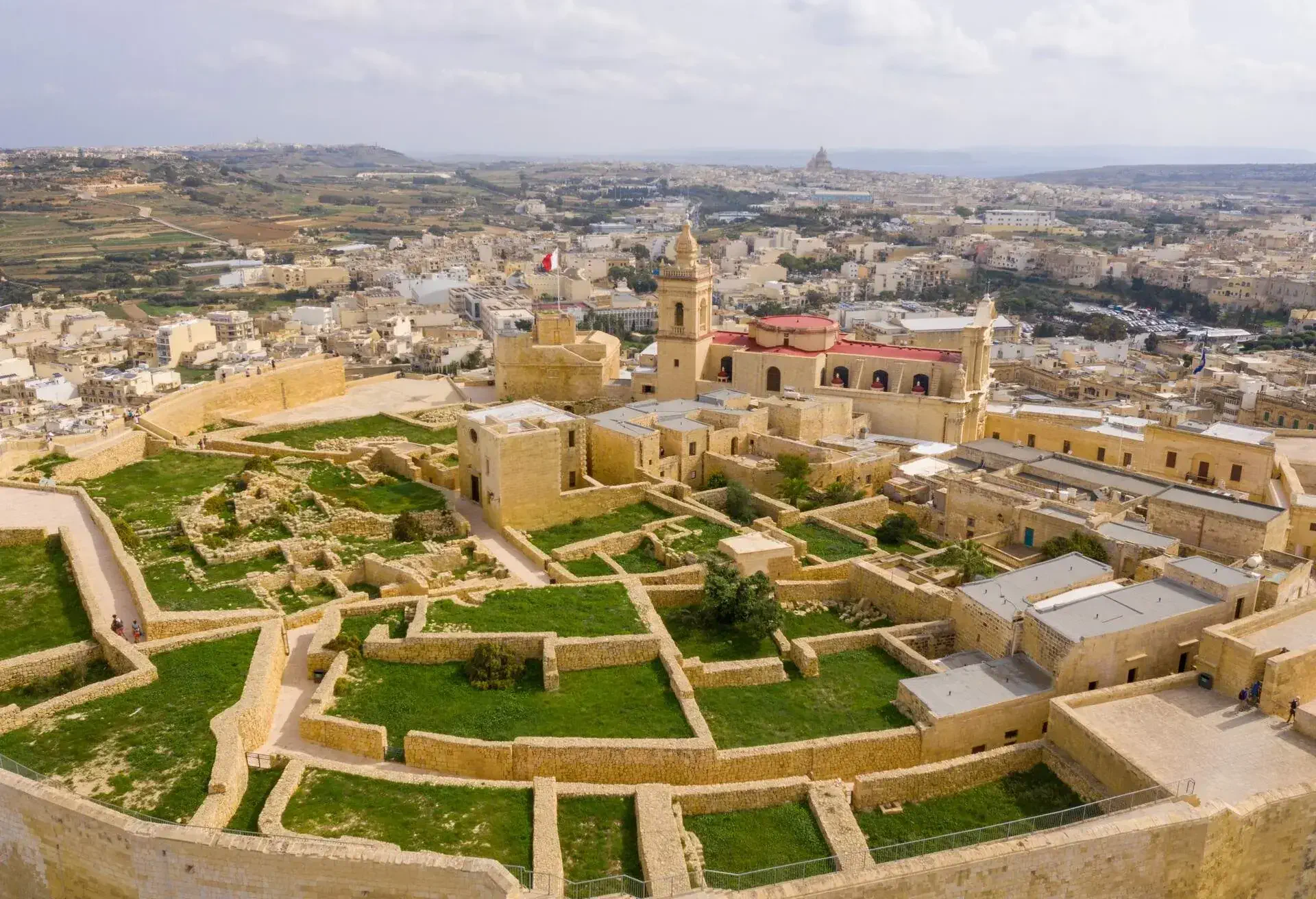
Helmed by award-winning chef Carl Zahra, the Fork and Cork is a culinary gem hidden within the limestone walls of a 19th century family estate just outside Mdina. Serving up beautifully presented Mediterranean dishes with a wine list to match, it’s well worth the trip. The menu changes daily, but spans seafood, pasta and homemade desserts.
Address: Telgha Tas-Saqqajja, L-Imdina, Malta
Phone: +356 7904 7043
Qbajjar Restaurant, Gozo
Overlooking the ocean on the island of Gozo, Qbajjar Restaurant delivers magnificent views along with an impressive menu of Maltese and Mediterranean options ranging from seafood to pizza to rabbit-infused pasta. The fish soup and carpaccio are top picks.
Address: Triq Ix-Xwejni, Iż-Żebbuġ
Phone: +356 2155 1124
Nenu the Artisan Baker, Valletta
A cheerful venue near the Basilica St Dominic, Nenu peeks its head out from between a dozen or so of Valetta’s famous painted doors. On the menu are a variety of authentic plates for sharing, as well as stews, pastas and meat dishes. Its key point of pride? Everything from the meat to the liquor is entirely Maltese-sourced.
Address: 143 St Domnic Street, Valletta
Phone: +356 2258 1535
Now that you’re in the know, go out and sample all these dishes. Igawdu l-ikla tiegħek (enjoy your meal)!

